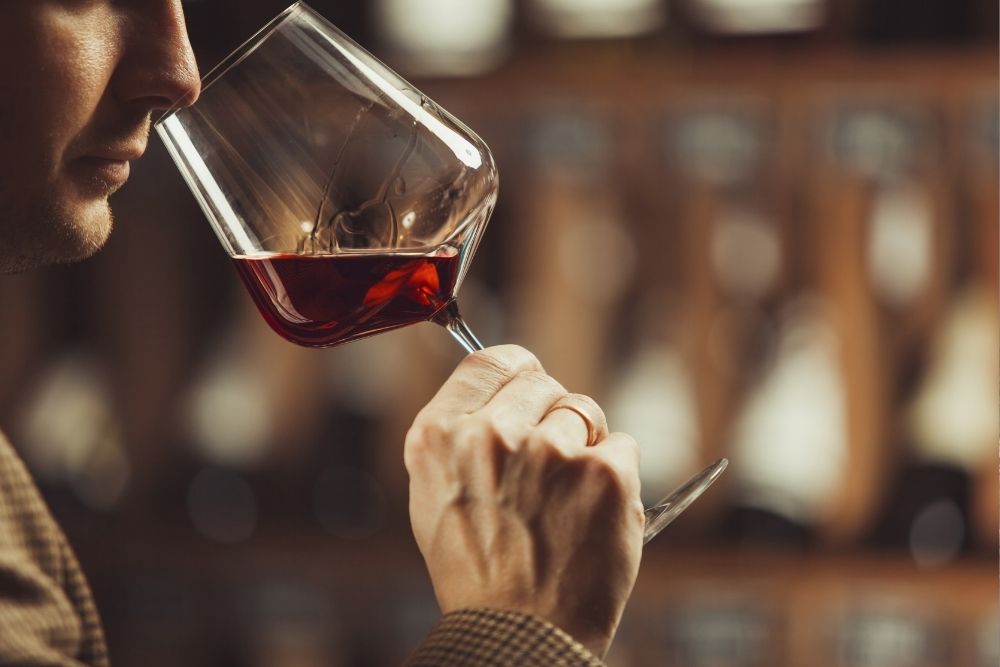
How Is Alcohol Removed From Wine?
Raising a glass doesn’t have to mean raising your blood alcohol level. There’s always a reason to celebrate, but how people celebrate has been changing. More and more people are choosing to forgo alcohol, but that doesn’t mean that they’re skipping out on having some of their favorite formerly alcoholic beverages. The zero-alcohol wine community is growing quickly, but not all non-alcoholic wine is created equally.
How is alcohol removed from wine? Different winemakers employ various methods to reduce the alcohol content in wine. Each method has its own strengths and weaknesses, with some methods standing out from the rest as the best way to create a non-alcoholic wine that retains the unique taste, body, and aromas of the world’s finest wines.
4 Methods for Removing Alcohol From Wine
Vacuum Distillation

Vacuum distillation has become one of the most popular ways to remove alcohol from wine—and for good reason. The process starts by placing the wine in a vacuum chamber. From there, the pressure decreases, which makes the boiling point of alcohol drop significantly. Because of this decrease, the alcohol evaporates at much lower temperatures. Without the temperature needing to be as high as is typical for evaporating out alcohol, the dealcoholized wine retains its flavor. In fact, research has found that using vacuum distillation results in a greater reduction of alcohol while actually increasing the concentration of other essential components for wine, such as flavonoids.
It’s for these reasons that BEAU VIVA chose to use vacuum distillation for our zero-alcohol sparkling rosé. Through vacuum distillation, we maintain the wine’s integrity and preserve its delicate aromas. We then add in the finest of bubbles to achieve that sparkling quality we expect from rosé.
Reverse Osmosis

To dealcoholize wine using reverse osmosis, the wine is passed through a membrane to remove the alcohol. However, there are many reasons why this method is not ideal. To begin, it’s a time-consuming process. Not all the alcohol is removed with just one pass through the membrane. It would take several passes to significantly reduce the alcohol content in the wine.
The second issue is that reverse osmosis does not maintain the aromas and flavors of wine as well as vacuum distillation can, and some note that there is a consistency change between the alcoholized wine and the wine that has been dealcoholized by reverse osmosis. The final issue deals with the legality of this method. To properly dealcoholize the wine, water needs to be added—but adding water to wine is prohibited in many wine-producing countries.
Pervaporation

Pervaporation utilizes a membrane similar to reverse osmosis, but it’s a distinctly different process. The pervaporation membrane, unlike the reverse osmosis membrane, is non-porous. The alcoholized wine is directed to one side of the membrane, and a part of that feed stream undergoes vaporization as it moves to the opposite side of the membrane. The resulting permeate is extracted and condensed into a liquid state. While an effective method, the main drawback of this process is that many (and, in some cases, the majority) of the wine’s aroma compounds are lost in pervaporation. Pervaporation membranes are also expensive, which makes this method not particularly cost-effective for winemakers.
Spinning Cone Column

The spinning cone column method uses a vertical column made of stainless steel with fixed cones in the inner wall and spinning cones attached to the shaft that rotates in the middle of the column. To start, alcoholized wine is poured into the top of the column. After running down the first stationary cone, it forms a thin film before being rotated upward and outwards across the surface of the rotating cone. As it travels up and out, it’s sent into another stationary cone, and the process is repeated.
At the same time, another flow is created by injecting the wine into the base of the column. Steam moves over the surface of the thin films formed in this process and combines with the airborne liquid droplets. The new liquid is recovered from the bottom of the column while the vapor coming out of the top is recondensed into a concentrated liquid form.
While this method is considered one of the more environmentally friendly processes for removing alcohol from wine, there are some drawbacks. Studies have found that using this process to remove a high percentage of alcohol with the goal of reaching a 0% ABV can result in imbalances in acidity, body, and sweetness. However, aroma compounds are generally well-preserved with the spinning cone column method, particularly when the process is enhanced by taking aroma recovery steps.
Choose the Best Alcohol-Free Wine and Celebrate Your Way
There are many different ways to remove alcohol from wine, with this list just scratching the surface. It’s also worth noting that these methods are designed for removing alcohol from wine, while there are other methods that prevent the alcohol from forming in the first place. But many of the best winemakers in the world who have embraced non-alcoholic wine agree that vacuum distillation is one of the best methods for removing alcohol from wine when you want to preserve incredible taste and aroma.
At BEAU VIVA, we believe wine is meant to be savored, which is why we use vacuum distillation to create a zero-alcohol wine worth savoring. Whether you’re forgoing alcohol altogether or just for an evening, you deserve a taste that enchants and inspires. BEAU VIVA is anything but an alternative to alcoholized wine. It’s a unique experience. Our zero-alcohol rosé is vacuum distilled so that every flavor—from fresh citrus to juicy strawberries and raspberries—is not only preserved but enhanced as delicate bubbles dance along your tongue. And unlike many non-alcoholic wines, BEAU VIVA is truly zero-alcohol. It’s 100% wine and 0% ABV.
Explore BEAU VIVA, wine without alcohol, but with so much more.
